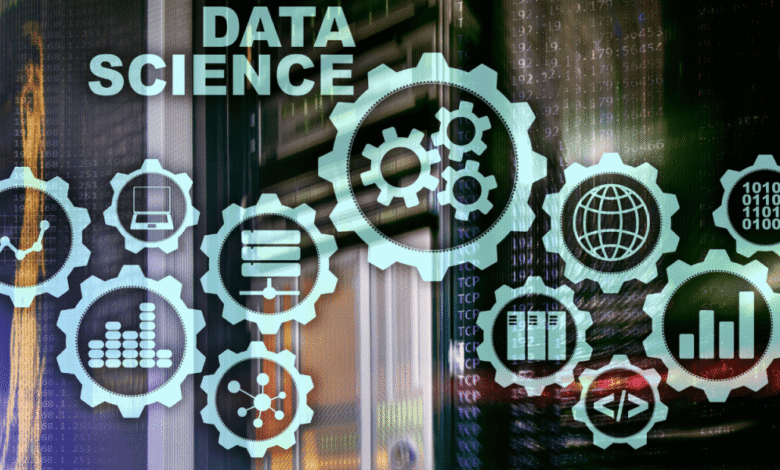How Data Science is Shaping the Future of Decision-Making

In the rapidly evolving world of information technology and advanced computation, data science stands at the forefront, acting as a critical tool in deciphering complex data and extracting actionable insights. Predictive analytics, a core component of data science, has become indispensable to modern organizations, transforming raw data into strategic foresight. By leveraging statistical modeling, machine learning, and algorithms, predictive analytics enables businesses and institutions to make informed decisions, anticipate trends, and understand future outcomes. As we delve deeper into this fascinating field, we uncover how data science, through the lens of predictive analytics, is setting new benchmarks in decision-making processes across various sectors.
THE EVOLUTION OF PREDICTIVE ANALYTICS
Predictive analytics is not a new concept; its roots can be traced back to the early 20th century when statistical theory began to evolve. However, the current wave of interest and application has been driven by the explosion of data and advancements in computing power. Originally used within the confines of academic research, predictive analytics has burgeoned into a critical component of modern business strategy. The proliferation of big data has compelled organizations to seek more sophisticated methods of processing and interpreting information. Today, predictive analytics is a multifaceted tool employed in industries ranging from finance to healthcare, each using it to harness data’s potential for forecasting and strategic planning.
This transformation has been catalyzed by several key developments. The advent of machine learning and artificial intelligence has significantly enhanced the ability to analyze and predict outcomes using vast datasets. Cloud computing has made it feasible for businesses of all sizes to access powerful analytical tools without requiring extensive in-house infrastructure. Furthermore, the democratization of data science knowledge—through educational programs, online courses, and open-source platforms—has empowered a diverse range of professionals to adopt predictive analytics in their decision-making processes.
THE ROLE OF MACHINE LEARNING IN PREDICTIVE ANALYTICS
Machine learning is the engine that powers predictive analytics, offering a suite of algorithms capable of identifying patterns and trends from historical data. By automating the prediction process, machine learning models can continuously learn from new data, improving their accuracy and reliability over time. This adaptability is particularly valuable in environments where conditions evolve rapidly, such as stock markets or online consumer behavior.
Supervised and unsupervised learning are the two predominant types of machine learning used in predictive analytics. Supervised learning involves training a model on a known dataset, where the outcome is labeled, allowing the algorithm to learn the mapping between inputs and outputs. Conversely, unsupervised learning deals with unlabeled data, aiming to uncover hidden structures within the dataset. Both methods provide significant benefits, depending on the context and the nature of the data being analyzed.
Machine learning has been transformative across various sectors. In finance, it helps in credit scoring, risk management, and detecting fraudulent activities by sifting through millions of transactions. In healthcare, predictive models assist in patient diagnosis, treatment personalization, and hospital resource management. Retailers utilize machine learning to predict consumer preferences, optimize inventory, and tailor marketing campaigns.
DATA QUALITY AND ITS IMPACT ON PREDICTIVE ACCURACY
The caliber of data utilized in predictive analytics determines the accuracy and reliability of the outcomes. High-quality data—characterized by accuracy, completeness, consistency, and timeliness—is crucial for building robust predictive models. Poor data quality can lead to inaccurate predictions, which may adversely impact decision-making and diminish trust in analytical insights.
Data preprocessing is a fundamental step in ensuring data quality. This involves cleaning the data to remove errors and inconsistencies, integrating data from multiple sources to ensure completeness, and transforming data into a format suitable for analysis. Data scientists must also deal with missing data points, outliers, and biases that could skew results and compromise model performance.
Organizations must invest in processes and technologies that ensure data integrity throughout its lifecycle. This includes deploying data validation techniques, establishing data governance strategies, and leveraging data profiling tools. Furthermore, fostering a culture of data literacy helps ensure that data is handled properly at all organizational levels, from collection and storage to analysis and dissemination.
ETHICAL CONSIDERATIONS IN PREDICTIVE ANALYTICS
With great power comes great responsibility, and the application of predictive analytics raises several ethical concerns that must be addressed. The use of personal data for predictive purposes can infringe on individual privacy and lead to unintended biases if not managed carefully. These biases may originate from historical data reflecting societal inequalities, resulting in discriminatory outcomes in areas such as hiring, lending, and law enforcement.
Maintaining transparency and accountability in predictive modeling is paramount. Organizations must ensure that their models comply with legal standards, protect user privacy, and prevent discriminatory practices. This includes conducting rigorous bias audits, employing diverse datasets, and maintaining an open dialogue about the ethical implications of predictive analytics.
Additionally, stakeholders must be adequately informed about how predictive models are used and the potential impact of their predictions. This transparency builds trust and ensures that the analytical processes serve the interests of both organizations and individuals equitably and responsibly.
PREDICTIVE ANALYTICS IN BUSINESS STRATEGY
Predictive analytics is a cornerstone of modern business strategy, providing companies with a significant edge by turning data into actionable insights. By forecasting future trends and behaviors, businesses can make proactive decisions that improve operations, enhance customer experiences, and uncover new growth opportunities. In customer relationship management, predictive models analyze purchase history, browsing behavior, and demographics to tailor marketing efforts and strengthen customer retention. Similarly, in supply chain management, predictive analytics helps anticipate demand, optimize inventory, and prevent costly disruptions—ensuring smoother logistics and reduced waste.
To further enhance the impact of data-driven strategies, many professionals are now focusing on mastering AI tools through skills like prompt engineering. This allows teams to fine-tune AI queries and generate precise outputs, leading to deeper insights and smarter automation. By integrating predictive analytics with prompt engineering, businesses can stay agile, make faster decisions, and maintain a competitive edge in an increasingly dynamic marketplace.
THE IMPACT OF PREDICTIVE ANALYTICS ON HEALTHCARE
In healthcare, predictive analytics is revolutionizing patient care and operational efficiency. Medical professionals leverage predictive models to enhance diagnostic accuracy, predict patient outcomes, and optimize treatment plans. Using historical patient data, predictive analytics can identify early signs of diseases, enabling timely interventions and reducing healthcare costs.
Hospitals and healthcare providers also benefit from predictive analytics in resource management and operational planning. Predictive models help forecast patient admissions and demand for medical resources, enabling effective resource allocation and reducing patient wait times. In the era of personalized medicine, predictive analytics facilitates the customization of treatment plans based on individual patient data, enhancing treatment efficacy and patient outcomes.
Moreover, predictive analytics aids in epidemic forecasting and public health management. By analyzing trends in disease spread and population data, public health officials can predict outbreaks, develop strategic responses, and allocate resources effectively to mitigate impact.
IMPLEMENTING PREDICTIVE ANALYTICS IN ORGANIZATIONS
The successful implementation of predictive analytics within an organization requires a strategic approach that encompasses data collection, processing, analysis, and integration into decision-making frameworks. Organizations must establish a strong data infrastructure that enables the efficient flow of information across departments and processes.
Investing in technology is essential for processing and analyzing large volumes of data. Advanced analytics platforms, cloud solutions, and machine learning tools are critical components of a robust predictive analytics system. Additionally, organizations must foster a culture of collaboration between data scientists, IT professionals, and business leaders to ensure alignment and effective utilization of predictive insights.
Training and development programs, such as a part-time data science course, can equip employees with the necessary skills to harness predictive analytics effectively. By empowering staff with analytical skills, organizations can build internal capabilities to drive innovation and data-driven decision-making. This holistic approach ensures that predictive analytics becomes an integral part of the organizational fabric, enhancing performance and competitiveness in an increasingly data-centric world.
FUTURE TRENDS IN PREDICTIVE ANALYTICS
As technology evolves, the future of predictive analytics promises exciting advancements that will further refine its capabilities and applications. Artificial intelligence and deep learning are expected to enhance predictive accuracy and model complexity, allowing for more nuanced insights and decision-making. Real-time analytics and streaming data processing will enable organizations to respond instantaneously to emerging trends and customer behaviors.
The integration of predictive analytics with emerging technologies, such as the Internet of Things (IoT) and blockchain, will expand its influence across industry sectors. IoT devices generate massive amounts of data, offering unprecedented opportunities for predicting machine maintenance, optimizing energy consumption, and enhancing user experiences. Blockchain technology ensures data provenance and security, facilitating trust in predictive processes in sensitive areas like finance and healthcare.
Additionally, the democratization of predictive analytics tools and platforms will continue to lower barriers to entry, enabling small and medium-sized enterprises to leverage these capabilities without significant investments. Open-source libraries, user-friendly interfaces, and automated machine learning solutions will empower businesses of all sizes to explore and utilize predictive analytics effectively.
CONCLUSION
Predictive analytics, as a pivotal aspect of data science, is reshaping the landscape of decision-making across sectors. It empowers organizations to transcend traditional analytical boundaries, providing a forward-looking perspective that is essential for thriving in a dynamic environment. While challenges such as data quality, ethical considerations, and the need for skilled personnel persist, the potential benefits of predictive analytics in enhancing efficiency, competitiveness, and customer satisfaction are significant.
As organizations strive to remain ahead in their respective industries, embracing predictive analytics is no longer optional but essential. By investing in the right technologies, fostering a data-driven culture, and addressing ethical imperatives, businesses can harness the full potential of predictive analytics to achieve sustainable growth and innovation. As we continue to explore the boundaries of what predictive analytics can achieve, its impact on the future of decision-making promises to be both transformative and enduring.

